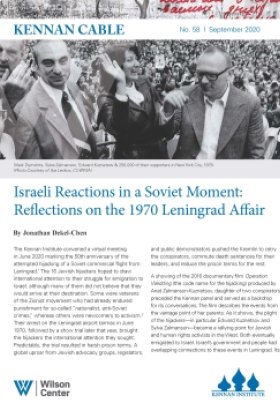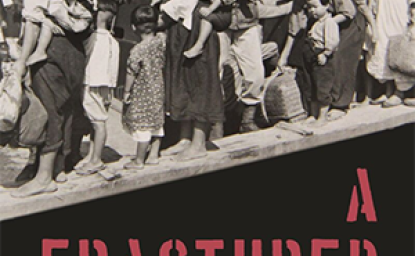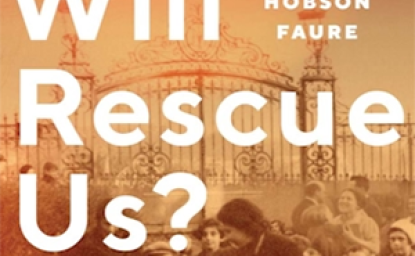Kennan Cable No. 58: Israeli Reactions in a Soviet Moment: Reflections on the 1970 Leningrad Affair


The Kennan Institute convened a virtual meeting in June 2020 marking the 50th anniversary of the attempted hijacking of a Soviet commercial flight from Leningrad.[1] The 16 Jewish hijackers hoped to draw international attention to their struggle for emigration to Israel, although many of them did not believe that they would arrive at their destination. Some were veterans of the Zionist movement who had already endured punishment for so-called “nationalist, anti-Soviet crimes,” whereas others were newcomers to activism.[2] Their arrest on the Leningrad airport tarmac in June 1970, followed by a show trial later that year, brought the hijackers the international attention they sought. Predictably, the trial resulted in harsh prison terms. A global uproar from Jewish advocacy groups, legislators, and public demonstrators pushed the Kremlin to retry the conspirators, commute death sentences for their leaders, and reduce the prison terms for the rest.
A showing of the 2016 documentary film Operation Wedding (the code name for the hijacking) produced by Anat Zalmanson-Kuznetsov, daughter of two conspirators, preceded the Kennan panel and served as a backdrop for its conversations. The film describes the events from the vantage point of her parents. As it shows, the plight of the hijackers—in particular Edward Kuznetsov and Sylva Zalmanson—became a rallying point for Jewish and human rights activists in the West. Both eventually emigrated to Israel. Israel’s government and people had overlapping connections to these events in Leningrad. Its responses illustrate how a small country navigates foreign policy challenges with a superpower. Those reactions reflected not just the mood and realities of the time but also help clarify the complexities of the Israel-Russia relationship today.
Roots & Legacies: From Leningrad to Israel
Multiple factors, at times contradictory, influenced Israel’s dealings with the Soviet Union in the 1960s and 1970s. On the one hand, Israel was the longed-for destination of the Leningrad hijackers and growing numbers of Soviet Jews; Moscow saw this as a threat to its claims of ideological supremacy over the West and the nation-state model. Israel’s essence demanded it absorb any Jew who desired immigration. There was a core feature of Israel’s demography that strongly contributed to its Soviet policy: most of the State of Israel’s founding generations emigrated from Eastern Europe starting in the 1880s, including men and women who rose to leadership positions in its main political parties. Many of them hailed from territories embodied in the USSR after 1917. This familiarity—and, for some, resentment—contributed to ambivalence among much of Israel’s political and artistic elites about all things Russian and Soviet. Moreover, since 1948 Israel has intermittently tried to position itself as standard-bearer and/or protector for Jews worldwide. Israel both remembered its debt for early Soviet support while also bridling since the Six-Day War under the Kremlin’s virulent anti-Zionist propaganda campaign. Added to these factors, the events in Leningrad transpired at a time of international transitions. On a global level, détente between the USSR and the United States was still embryonic. Israel and the U.S. constructed their new strategic partnership amid the ebbs and flows of the Cold War in the Mideast.
The passage of time since 1970, along with changes wrought by the disintegration of the Soviet Union, does not obscure lines of continuity in Israeli behavior toward a global power with whom it had complex connections and intersecting interests. Israel has always faced a complicated diplomatic landscape. Looking toward Eurasia, it must balance relations with all the USSR’s successor states, particularly between Russia and Ukraine. Among the factors at play then and now are the willingness of specific global actors to place military and economic “boots on the ground” in Israel’s neighborhood, the numbers and status of immigrants (and their children) from the former Soviet Union in Israel (who comprise nearly 20 percent of the electorate today), and fluctuations in coalition politics.
Before and after 1970, Jerusalem has coped with difficult choices about how to support Jewish interests in Russian-speaking space. In doing so, Israeli leaders also consciously kept their distance from dissident movements to avoid even an appearance of interference in domestic issues. Israel’s approach to the Russian Federation and Ukraine in recent years reflects the lasting echoes of this vacillation between an impulse for warmer relations versus reticence, depending upon Jerusalem’s domestic political calculus and its closeness with the administration in Washington. These continuities connect Prime Minister Netanyahu’s behavior today toward President Putin’s Russian Federation to Prime Minister Golda Meir’s approach in 1970 toward General Secretary Brezhnev’s Soviet Union.
With that continuity in mind, it is time to drill down into the Israeli landscape before and after the Leningrad Affair. It makes sense that the hijacking and trial must have had great resonance there. What do the hijackers’ peers living in Israel think? From my conversations with former Zionist activists denied permission by Soviet authorities to emigrate to Israel (refuseniks), it appears that most are split regarding their personal moments of national awakening: some point to the Six-Day War, while others mark the hijacking. An older generation of former Zionist activists in the Soviet Union insisted, however, that there had always been pockets of Jewish nationalism seeking freedom to express their ethno-national identity or the right to emigrate. For them, the “youngsters” of the 1960s and 1970s received outsized credit for reenergizing a consciousness that had existed since the 1880s. Let us accept as a “given” the difficulty of reaching a consensus among former refuseniks about the impact of this or that event. An objective impediment persists for scholarly analysis of Israel’s responses to the Leningrad episode, or anything else connected to the movement: the archives of the semi-secret government agency (Nativ or Lishkat ha-kesher in Hebrew) responsible for support of Soviet Jewry remains mostly inaccessible to researchers, with no clear timetable for declassification.
What framed the contours of Israel-USSR contacts concerning Soviet Jewry before the dramatic scenes in Leningrad? From 1948 until 1968, amid the ups and downs of bilateral relations, Israeli leaders did not openly encourage emigration. In the first years after Israel’s independence, Moscow believed it might cultivate Israel as a strategic partner in the Mideast. These hopes waned in the early 1950s as Israel’s leaders adopted more capitalist domestic policies and the country gravitated toward the Western camp.[3] Underneath high politics, however, an Israel-Soviet connection endured because large swaths of the Israeli public remained circumspect about socialism, while significant parts of the body politic with familial roots in Eastern Europe held onto warm nostalgia and retained old cultural affinities.
Following cycles of deterioration and recovery, relations shifted from ambivalence to hostility following Israel’s victory over Soviet client states in the June War in 1967. Moscow severed diplomatic ties while the battles still raged and within a few weeks launched a fierce anti-Zionist campaign in the Eastern bloc. Then, in November 1969, months before the Leningrad hijacking, Prime Minister Meir announced from the Knesset podium that the USSR should permit emigration for Soviet Jews, breaking from the former quiet understanding with the Kremlin about the fate of the Jewish community.[4]
Lest there be any doubt, Meir and other Israeli leaders genuinely cared about the fate of Soviet Jews. But she—akin to so-called “establishment” Jewish leaders in America and Britain—still preferred a behind-the-scenes approach on the Soviet Jewry issue.[5] Operation Wedding mentioned a significant accomplishment from this quiet diplomacy: Meir enlisted Spain’s Generalissimo Franco to help convince the Kremlin to commute the death sentences against two of the Leningrad hijackers.
Transnational Mobilization
Reassessing the legacies of the hijacking benefits from a broad analytical lens. For one, the Leningrad Affair accelerated the entry of women into organized advocacy in the Jewish world.[6] The best example of this is the British group The 35s, who at their founding in 1971 mobilized around a young refusenik, Raiza Palatnik, as their cause célèbre, eventually adding Sylva Zalmanson as a face of their campaign.[7] This gendered feature of the global campaign had less impact in Israel. Why? In those years, it was still a country mostly comprised of immigrants with old-world values in which the women’s equality movement had not yet gained traction. The Leningrad trials did, however, cause an uptick in popular mobilization in late 1970, as Zalmanson-Kuznetsov’s film suggests. Protests during the trials were arguably the biggest public gatherings to date, the largest drawing an estimated crowd of 30,000 in Tel Aviv. Thousands more went to the Western Wall to support hunger strikes begun by former Prisoners of Zion.
Why did the hijackers appeal so powerfully to Israelis, even those with no personal ties to Russia? Evidently, the hijackers’ bravery showed Israelis that the conspirators fit Zionist archetypes of self-empowered Jews, no longer hapless victims of repressive, anti-Semitic governments.[8] A nationalist “call to arms” was especially timely at this moment; the euphoric afterglow of the Six-Day War had begun to fade into a bleaker national mood arising from the bloody War of Attrition between Israel, Egypt, and its allies from 1968–1970. With their courage on clear display, the hijackers seemed more “Israeli” than diasporic and, therefore, worthy of support. They also offered a unifying cause for a war-weary country increasingly skeptical of its national leadership.
Mass popularity of the movement did not last long after the trial, however. If public opinion polling at the time can be trusted, a majority of Israelis did not think more assertive actions were needed by their government on behalf of Soviet Jewry, despite the urgings of domestic advocacy organizations.[9] Unlike Jewish communities in the diaspora, after the Leningrad trials most non-Russian speaking Israelis withdrew from sustained engagement in the campaign for two reasons. First, for Israelis more immediate predicaments overshadowed the fate of refuseniks; among these were the domestic crisis of confidence resulting from the 1973 Yom Kippur War and the upheavals that followed what the public viewed as a national tragedy and political fiasco. Secondly, Israelis could not travel to the USSR. This disconnection from Soviet Jews in situ probably took some of the wind out of the movement’s sails. Third, an absence of Soviet diplomatic presence in Israel after June 1967 made it difficult to sustain popular enthusiasm in lieu of specific sites for protest.
Added to those factors, less objective dynamics contributed to ambivalence about the Soviet Jewry issue among Israelis. For starters, diaspora activists campaigned from a sense of individual responsibility without an expectation that their home countries would act. By contrast, most Israelis probably felt less of a personal obligation to mobilize because their own government proclaimed itself a protector of Jews worldwide. Secondly, the Israeli left had been aligned with the socialist world (with Moscow at its center) at least until Stalin’s death. Even after Khrushchev’s “Secret Speech” in 1956, a growing recognition in Israel’s leftist elite of Soviet sins coexisted with ongoing contacts to global socialist networks. When no doubt remained, starting in the second half of the 1960s, that Moscow functioned as the political patron and arsenal for Israel’s hostile neighbors, many Israelis still kept contacts open with the Soviet Union and Russian culture. In parallel, some Israelis feared having their country categorized as a mere American pawn in the Cold War, making them hesitant to close all windows of opportunity with the Soviet Union. Lastly, the very act of hijacking must have disturbed some Israelis in the 1970s, given the rash of Palestinian attacks against El Al and other airlines.
Many former Israeli activists and historians believe that the Leningrad trials brought diaspora advocacy groups in the Americas and Western Europe closer to the aggressive public relations tactics promoted by Israel’s secretive Nativ agency. According to this line of thought, gravitation toward Nativ provided Israel greater influence over organizations like the National Council for Soviet Jewry, the first umbrella organization for groups in the U.S. advocating for Soviet Jews.[10] Archival records, however, do not substantiate this stance. And no matter how hard advocacy organizations lobbied, fluctuations between crises of the moment and détente guided policies toward Moscow much more than human rights considerations for the Nixon and Ford administrations. That being said, we must keep in mind that the Soviet Jewry movement did become a political and legislative flashpoint in many places and the United States. Developments in Congress stand out, particularly the Jackson-Vanik and the Stevenson amendments.[11] In this case, humanitarian concern for the plight of refuseniks, lingering Cold War ideologies among the amendment’s proponents, and the pressures of electoral politics coalesced into groundbreaking legislation linking international trade policy to protection of human rights in a foreign country, namely the USSR. As an illustration of their ambivalence, Israeli officials voiced a variety of positions regarding passage of the amendments.[12]
Israel’s government never energetically cultivated public awareness in Israel about the Soviet Jewry movement, even during the Leningrad trials. To the chagrin of many, it still does not. The lack of urgency probably emanated mostly from domestic realities: until the former Prisoner of Zion Natan Sharansky entered Israel’s electoral system in the late 1980s following his release from the USSR, no major Israeli politician prioritized Soviet Jewry. Before that, voluntary associations (Magen and Ma’oz, led mostly by Russian speakers and student groups) had to nudge the state toward visible action.[13] Israel’s government always believed that diplomatic restraint would best advance the cause of open immigration for Soviet Jews.[14] When faced with growing public demands for action during the Leningrad trials, the government created the non-partisan, semi-official Public Council for Soviet Jewry, which succeeded in drowning out some of the more belligerent voices among the advocacy organizations manned by Soviet emigres.[15] For most Israelis, the events in Leningrad seemed to affirm a core feature of their own evolving national narrative, through which a Zionist impulse for emigration to Israel underpinned national awakening and empowerment. This process seemed to be spreading among Soviet Jews, thereby “proving” to Israelis the centrality of their own country for the Jewish world. Israeli leaders and the public had less bandwidth to hear and absorb other voices among advocates in the diaspora campaigning for freedom of movement or religious liberties inside the USSR, instead of the right to emigrate to Israel.[16] Fewer still would have had listened to another fact that did not conform to Israel’s national narrative: large numbers of Soviet Jews went about their lives in relative contentment and had no greater desire to leave than did other Soviet citizens.
This tension between the singular ethno-nationalism that Israelis wanted—personified by the Leningrad hijackers—versus the layered truths of Soviet Jewish life emerged in the mid-1970s in what became known as the “drop-out” crisis.[17] For reasons discussed elsewhere,[18] starting in the late 1960s (and for the first time since the 1920s) the Soviet Union began opening its gates for significant emigration of Jews, predicated on exit visas issued to Israel. Until approximately 1974, almost all these emigrants flew to Tel Aviv. Starting that year, however, tens of thousands Soviet Jews demanded the right to migrate to other destinations in the West once they reached the designated transit stops in Rome and Vienna. This scene kindled acute conflict between Jerusalem and American-Jewish service organizations who had taken upon themselves the passage of Soviet Jews from the European airports to Tel Aviv. The Israeli government demanded that all emigrants continue to Israel; activists in the diaspora, by and large, respected the desires of these refugees. Stakes were high for Israel, given the swelling numbers of Soviet Jews allowed exit visas through the 1970s. In fact, by helping to open the doors for large-scale emigration from the USSR and the “drop-out” crisis it precipitated, the Leningrad hijackers unwittingly sowed the seeds of the current rift between Israel’s leadership and progressive communities in the diaspora.[19]
Current Russia-Israel Ties through the Prism of the Leningrad Hijacking
Debates about this period continue today, arising from awkward gaps between collective memory, historical accuracy, and personal sensitivities. For example, during the panel discussion in June, disagreement surfaced around the word “hijackers.” To some, it sounded offensive when applied to the heroes of the Leningrad Affair. For a scholar, the term “hijackers” seems suitable when discussing people who planned to forcibly take over a commercial airliner, no matter their justification or destination. Another disagreement arose regarding Israel’s role in the global Soviet Jewry movement. On one side are those who promote an Israeli version—based mostly on accounts of former officials—that its agents orchestrated advocacy movements in the diaspora.[20] On another side are former activists in the diaspora and scholars who see only episodic Israeli influence.[21] Comparable gaps between popular memory and the historical record still cloud the Israel-Russia relationship, dividing those who prefer to see an enduring, if imperfect, kinship between the peoples versus those who view the present and future through a prism of Russia’s centuries-long repression of Jews.[22]
In sum, developments in Israel during the Leningrad Affair of 1970 illustrate the coexistence of powerful collective memories with complex ethno-politics in countries hosting large diasporic communities. Dealing with the Soviet Union meant confronting an illiberal state that at once repressed Israel’s brethren, supplied weapons to their enemies, and also occupied a warm place in many Israeli hearts. Whether such meetings of past and present threading through the current Moscow-Jerusalem relationship serve—then and now—as roadmaps, obstacles, or opportunities depends upon leaders of the moment and their objectives.
The opinions expressed in this article are those solely of the author.
Jonathan Dekel-Chen is the Rabbi Edward Sandrow Chair in Soviet & East European Jewry at the Hebrew University of Jerusalem, where he holds a dual appointment in the Department of Jewish History & Contemporary Jewry and in the Department of General History. He served from 2007-2019 as the Academic Chairman of the Leonid Nevzlin Research Center for Russian and East European Jewry and is currently Chairman of the Russian & Slavic Studies Department. Dekel-Chen's research and publications deal with transnational philanthropy and advocacy, non-state diplomacy, agrarian history and migration.
[1] A recording of the June 18 webcast panel can be accessed at www.wilsoncenter.org/event/50th-anniversary-leningrad-hijackers-case-film-screening-and-discussion
[2] For a first-hand view, see Yosef Mendelevich, Mivtsah hatunah: ma’avakoh, ve-shihruroh shel asir tsion (Jerusalem: Keter, 1985).
[3] Gabriel Gorodetsky, “The Soviet Union’s Role in the Creation of the State of Israel,” Journal of Israeli History 22, no. 1 (2003): 4–20.
[4] For overviews, see Zvi Gitelman, A Century of Ambivalence: The Jews of Russia and the Soviet Union, 1881 to the Present (Bloomington: Indiana University Press, 2001), 154–156, 168–188; and Yosef Govrin, Yahasei Yisrael – B’rit hamoatsot me’et hidusham b’shanat 1953 ad nitukam me-hadash b’shanat 1967 (Jerusalem: Magnes, 1990).
[5] Significant fragmentation between older, “establishment” Jewish communal organizations (like the American Jewish Committee) and new advocacy organizations (like the Union of Councils of Soviet Jewry) characterized the American-Jewish movement. For commentary on the “establishment” organizations, see William W. Orbach, The American Movement to Aid Soviet Jews (Amherst: University of Massachusetts Press, 1979), iii–34.
[6] For views of the global movement, see Gal Beckerman, When They Come for Us We’ll Be Gone: The Epic Struggle to Save Soviet Jewry (New York: Houghton Mifflin, 2010). See also Laura Bialis’s documentary film Refusenik (U.S.A.: Foundation for Documentary Projects, 2008).
[7] Daphne Gerlis, Those Wonderful Women in Black: The Story of the Women’s Campaign for Soviet Jewry (London: Minerva, 1996). See also Stuart Altshuler, From Exodus to Freedom: A History of the Soviet Jewry Movement (Lanham, MD: Rowman & Littlefield, 2005), 50.
[8] Derek Penslar analyzes versions of this narrative in “Narratives of Nation Building: Major Themes in Zionist Historiography,” in The Jewish Past Revisited: Reflections on Modern Jewish Historians, ed. David Myers and David Ruderman (New Haven: Yale University Press, 1998), 104–127.
[9] NARA, Nixon Papers, WHCF, SMOF, Len Garment, Alpha-Subject file, "Jewish Matters 1971," box 117 ("Some views of the general Israeli public,” February 23, 1971); Leon Gershovitz, “Anahnu ve-atem? Ha-ma’avak ha-tsiburi b’Yisrael lema’an shihrur ve-aliyah yehudei Brit ha-Moetsot, 1948–1989” (M.A. diss., Hebrew University of Jerusalem, 2011).
[10]Noam Kochavi, “Idealpolitik in Disguise: Israel, Jewish Emigration from the Soviet Union, and the Nixon Administration, 1969–1974,” The International History Review 29, no. 3 (2007): 554–555; Pauline Peretz, “The Action of Nativ’s Emissaries in the United States: a Trigger for the American Movement to Aid Soviet Jews, 1958–1974,” Bulletin du Centre Recherche Français de Jérusalem 14 (2004): 112–128.
[11] Senator Henry Jackson and Representative Charles Vanik formulated this amendment to the 1974 Trade Act. Senator Adlai Stevenson added another amendment. All of the legislation sought to influence Soviet emigration policy for Jews and other minorities by linking Soviet behavior to the provision of Most Favored Nations status, purchases of agricultural commodities and advanced electronics.
[12] For assessment of the amendments, see Jonathan Dekel-Chen, “Faith Meets Politics and Resources: Reassessing Modern Transnational Jewish Activism," in Purchasing Power: The Economics of Modern Jewish History, ed. Rebecca Kobrin and Adam Teller (Philadelphia: University of Pennsylvania Press, 2015), 218–230.
[13] Gershovitz, “Anahnu ve-atem.”
[14] Nehemia Levanon, Ha-kod: Nativ (Tel Aviv: Am oved, 1995), 387.
[15] Kochavi, “Idealpolitik in Disguise,” 553–554.
[16] For example, see Vladimir Khanin, “The Jewish National Movement and the Struggle for Community in the Late Soviet Period,” in Revolution, Repression and Revival: the Soviet Jewish Experience, ed. Zvi Gitelman and Yaacov Ro’i (Lanham, MD: Rowman & Littlefield, 2007), 222–226.
[17] For details, see Fred A. Lazin, The Struggle for Soviet Jewry in American Politics: Israel versus the American Jewish Establishment (Lanham, MD: Lexington, 2005), 79–178.
[18] For discussions, see chapters in Robert O. Freedman, ed., Soviet Jewry in the Decisive Decade, 1971–80 (Durham, NC: Duke University Press, 1984).
[19] For more on this rift, see Dov Waxman, Trouble in the Tribe: The American Jewish Conflict over Israel (Princeton, NJ: Princeton University, 2016).
[20] For example, see Yaacov Kedmi, Milhamot avudot: edut ishit (Tel Aviv: Metar, 2011).
[21] See the case of The 35s in Gerlis, Those Wonderful Women in Black; and Barbara Oberman, “Skirts against the Kremlin,” Jerusalem Post, July 25, 2007, www.jpost.com/features/skirts-against-the-kremlin. See also Nehemiah Levanon, “Israel’s Role in the Campaign,” in A Second Exodus: The American Movement to Free Soviet Jews, ed. M. Friedman and Albert Chernin (Hanover, NH: Brandeis University Press, 1999), 70–83.
[22] For a recent example, see Jonathan Dekel-Chen, “Between Myths, Memories, History and Politics: Creating Content for Moscow’s Jewish Museum and Tolerance Center,” The Public Historian 40, no. 4 (2018): 104.
Author

Rabbi Edward Sandrow Chair in Soviet and East European Jewry, Hebrew University of Jerusalem

Kennan Institute
After more than 50 years as a vital part of the Wilson Center legacy, the Kennan Institute has become an independent think tank. You can find the current website for the Kennan Institute at kennaninstitute.org. Please look for future announcements about partnership activities between the Wilson Center and the Kennan Institute at Wilson Center Press Room. The Kennan Institute is the premier US center for advanced research on Eurasia and the oldest and largest regional program at the Woodrow Wilson International Center for Scholars. The Kennan Institute is committed to improving American understanding of Russia, Ukraine, Central Asia, the South Caucasus, and the surrounding region through research and exchange. Read more




